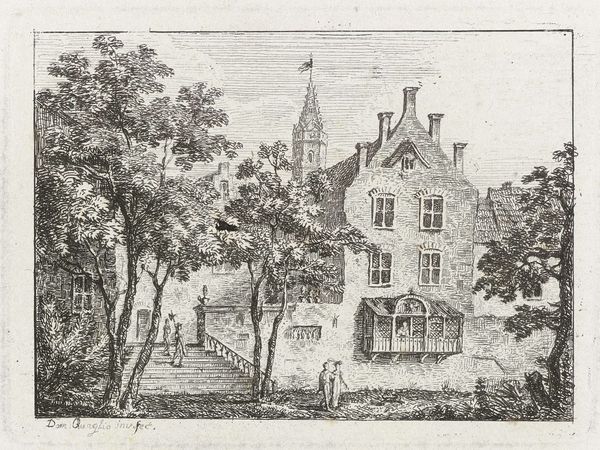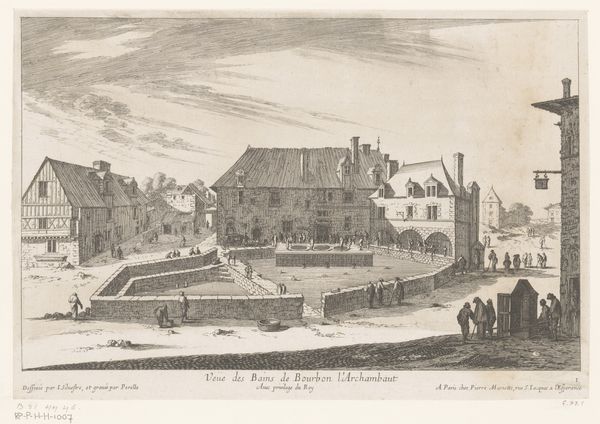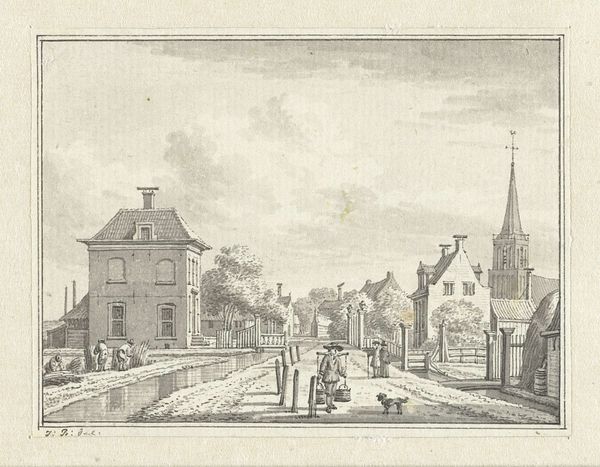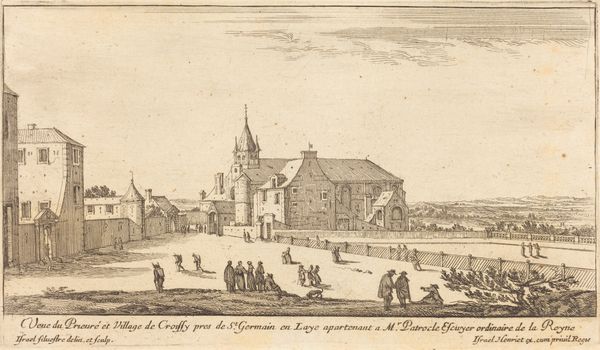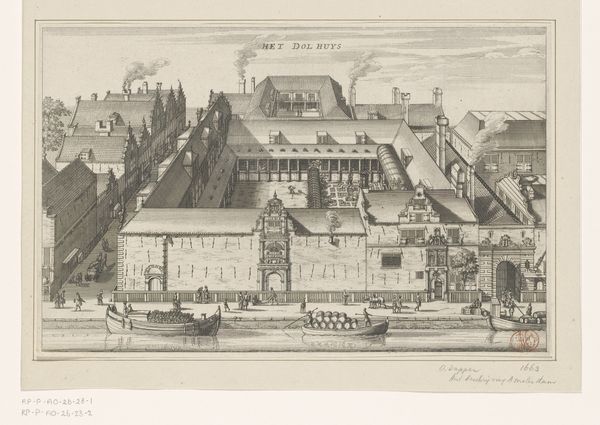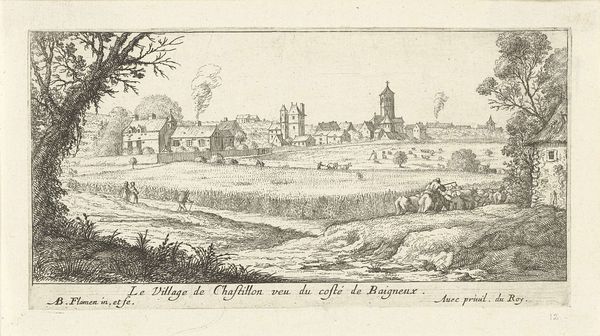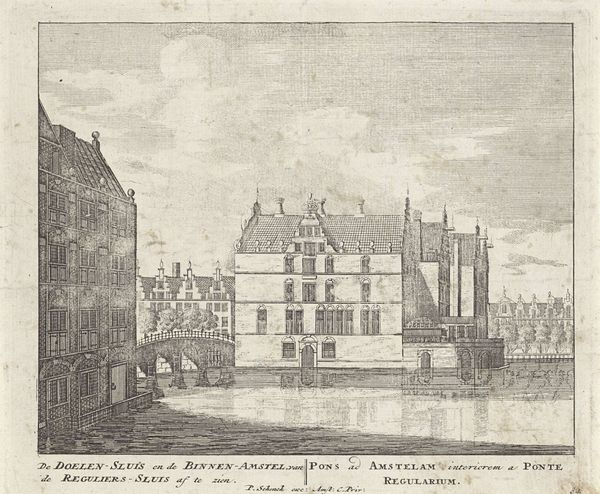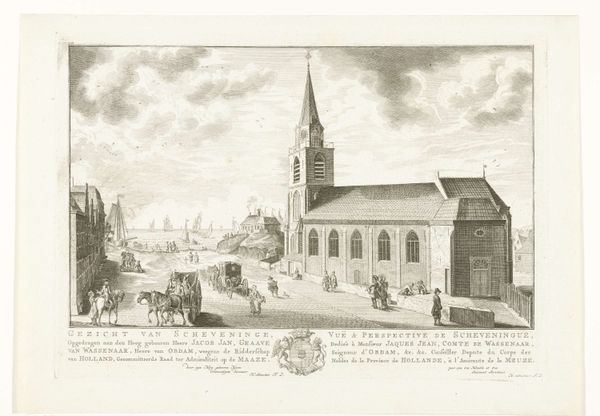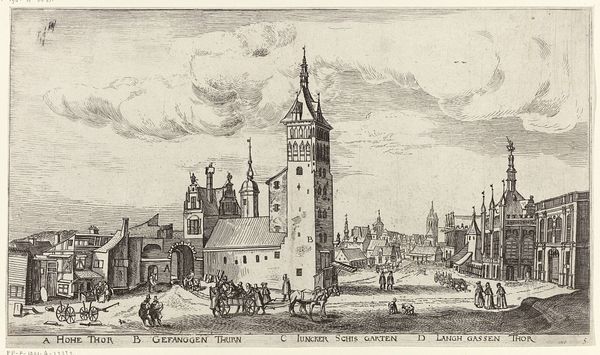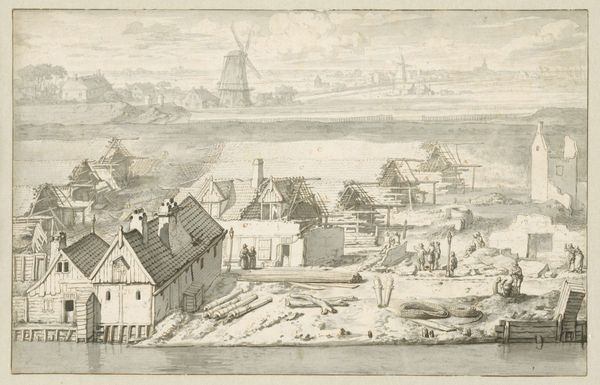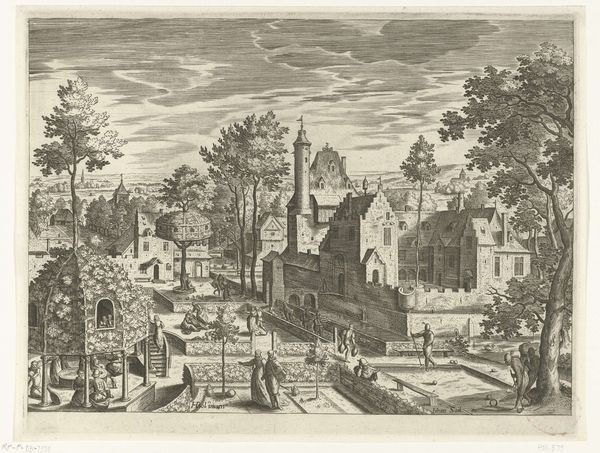
drawing, paper, ink
#
drawing
#
dutch-golden-age
#
landscape
#
paper
#
ink
#
cityscape
#
genre-painting
Dimensions: height 176 mm, width 233 mm
Copyright: Rijks Museum: Open Domain
Curator: Cornelis Pronk's drawing, “De Noordmolen bij de Oostpoort te Rotterdam,” rendered sometime between 1701 and 1759, showcases the North Mill near the East Gate in Rotterdam, captured in ink on paper. It’s currently held at the Rijksmuseum. My first impression is the prominence given to the windmill itself. It seems to loom over everything, a powerful symbol perhaps? Editor: It absolutely dominates the landscape, and there's an almost haunting quality to the bare trees and muted tones. I sense a pre-industrial world teetering on the edge of change, doesn't it make you consider who that benefits and who it impacts? Curator: That's an astute observation. It certainly invites reflection on Rotterdam's economic landscape. The mill, strategically positioned near the Oostpoort, undoubtedly played a crucial role in processing goods entering and exiting the city. Consider the political implications embedded in controlling such vital infrastructure during that period. Editor: And it prompts questions of access and distribution. Who owned the mill? Who benefited from its operation, and at whose expense? This image, while seemingly a simple cityscape, hints at complex power dynamics and the social stratification of the time. I see echoes of today. Curator: It's remarkable how Pronk captured this nascent intersection of industry and urban life. One could see it as a commentary on how technology shapes the socio-economic fabric of a city and, more broadly, society at large. His commitment to capturing precise details makes this drawing an invaluable historical document. The meticulous rendering almost feels like an official record, right? Editor: But the "official" record often omits the voices of the marginalized. What about the workers? The people whose livelihoods were perhaps dependent on the mill’s success, yet who probably didn’t share in its profits equitably. I am struck by the absence of overt human presence, amplifying, maybe, that feeling of social disconnect. The drawing serves to humanize our questions as we study its impact. Curator: A vital consideration. Ultimately, viewing Pronk's work through our contemporary lens prompts us to not only acknowledge but critically investigate those absences in the historical narrative. Editor: Indeed. This understated sketch then provides a window onto Rotterdam's evolving landscape.
Comments
No comments
Be the first to comment and join the conversation on the ultimate creative platform.
